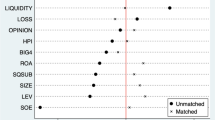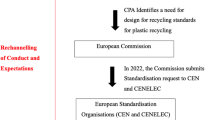Abstract
If a firm can contest the enforcement of an environmental regulation, neither increasing the probability nor severity of the fine will guarantee a reduction in a firm's illegally dumped waste. A policy that can unambiguously decrease illegal dumping is lowering the cost of legal disposal. This result occurs because the use of monitoring and fines to increase the probability or severity of enforcement triggers investment to evade enforcement, while a decrease in the costs of legal disposal does not. Investment in the resources to evade enforcement decreases the attractiveness of monitoring by significantly increasing the costs of environmental audits, administrative hearings, and judicial procedures. This occurs even with a high degree of regulator information about the firm's cost structure and no monitoring errors. In addition, if the regulator can only imperfectly monitor a firm's behavior so the firm can be accused of another firm's behavior, observable commitment to challenge enforcement will lead to overinvestment in resources to evade enforcement, an increased level of illegal dumping, and an overall increase in total costs relative to the unobservable case.
Similar content being viewed by others
References
Avenhaus, R. 1991. “Monitoring the Emission of Pollutants by the Inspector Leadership Method.” In.Conflicts and Cooperation in Managing Environmental Resources, edited by R. Pethig. Berlin:Springer-Verlag.
Baumol, W. 1991. “Toward Enhancement of the Contribution of Theory to Environmental Policy.”Environmental and Resource Economics 1:333–352.
Bouzaher, A., R. Cabe, and J. Shogren.1993. “Atrazine and Water Quality.” Mimeo, Iowa State University.
Brander, J., and B. Spencer. 1983. “Strategic Commitment with R&D:The Symmetric Case.”Bell Journal of Economics 14:225–235.
Copeland, B. 1991. “International Trade in Waste Products in the Presence of Illegal Disposal.”Journal of Environmental Economics and Management 20:143–162.
Crocker, T. 1984. “Scientific Truths and Policy Truths in Acid Deposition Research.” InEconomic Perspectives and Acid Deposition Control, edited by T. Crocker. Boston, MA:Butterworth Publishers.
Dixit, A. 1987. “Strategic Behavior in Contests.“American Economic Review 77:891–898.
Dower, R. 1990. “Hazardous Wastes.” InPublic Policies for Environmental Protection, edited by P. Portney. Washington, D.C.:Resources for the Future.
Environment Quality:21st Annual Report.1991.The President's Council on Environmental Quality, Washington, D.C.:U.S. Government Printing Office.
Hahn, R. 1988. “An Evaluation of Options for Reducing Hazardous Waste.”Harvard Environmental Law Review 12:201–230.
Harford, J. 1978. “Firm Behavior Under Imperfectly Enforceable Pollution Standards and Taxes.”Journal of Environmental Economics and Management 5:26–43.
Kambhu, J. 1989. “Regulation Standards, Noncompliance, and Enforcement.”Journal of Regulatory Economics 1:103–114.
Kambhu, J. 1990. “Direct Controls and Incentives System of Regulation.”Journal of Environmental Economics and Management 18:S72-S85.
Lawyer, R. 1986. “The Illegal Disposal of Waste.” Ph.D Dissertation, Laramie, WY:University of Wyoming.
Lee, D. 1984. “The Economics of Enforcing Pollution Taxation.”Journal of Environmental Economics and Management 11:147–160.
Linder, S., and D. McBride. 1984. “Enforcement Costs and Regulatory Reform:The Agency and Firm Response.”Journal of Environmental Economics and Management 11:327–346.
Magat, W., and W. K. Viscusi. 1991. “The Effectiveness of EPA's Regulatory Enforcement:The Case of Industrial Effluent Standards.”Journal of Law and Economics 33:331–360.
Malik, A. 1990. “Avoidance, Screening, and Optimal Enforcement.”Rand Journal of Economics 21:341–353.
New York Times. September 23, 1991.“U.S. Agencies Use Negotiations to Pre-empt Lawsuits Over Rules.” 1.
Porter, R. 1988. “Environmental Negotiation: Its Potential and Its Economic Efficiency.”Journal of Environmental Economics and Management 15:129–142.
Rich, B. 1985. “Environmental Litigation and the Insurance Dilemma.”Risk Management 32:34–41.
Russell, C.1990. “Monitoring and Enforcement.” InPublic Policies for Environmental Protection, edited by P. Portney. Washington, D.C.: Resources for the Future.235–244.
Schaffer, S. 1990. “Regulatory Compliance with Non-linear Penalties.”Journal of Regulatory Economics 2:99–103.
Segerson, K.1990.“Liability for Groundwater Contamination from Pesticides.”Journal of Environmental Economics and Management 19:227–243.
Shogren, J., and T. Cracker. 1991.“Cooperation and Noncooperative Protection Against Transferable and Filterable Externalities.”Environmental and Resource Economics 1:195–214
Sullivan, A.1987. “Policy Options for Toxics Disposal: Laissez-Faire, Subsidization, and Enforcement.”Journal of Environmental Economics and Management 14:58–71.
Tientenberg, T. 1989. “Indivisible Toxic Torts: The Economics of Joint and Several Liability.”Land Economics 65:305–319.
Tientenberg, T. 1991. “Innovations in Environmental Enforcement.”Presented at the European Association of Environmental and Resource Economics, Stockholm, Sweden.
Viscusi, W. K., and R. Zeckhauser. 1979. “Optimal Standards with Incomplete Enforcement.”Public Policy 27:437–456.
Wall Street Journal. April 2, 1991. “Big Corporations Hit by Superfund Cases Find Way to Share Bill.” 1.
Yandle, B. 1988. “Environmental Policy: A Perspective for the Next Decade.”MAPI Policy Review PA-705.Washington, DC: MAPI.
Yandle, B. 1989. “Bootleggers and Baptists in the Market for Regulation.” InThe Political Economy of Government Regulation, edited by J. Shogren.Boston, MA: Kluwer Academic Publishers.29–54.
Author information
Authors and Affiliations
Rights and permissions
About this article
Cite this article
Nowell, C., Shogren, J. Challenging the enforcement of environmental regulation. J Regul Econ 6, 265–282 (1994). https://doi.org/10.1007/BF01064655
Issue Date:
DOI: https://doi.org/10.1007/BF01064655




